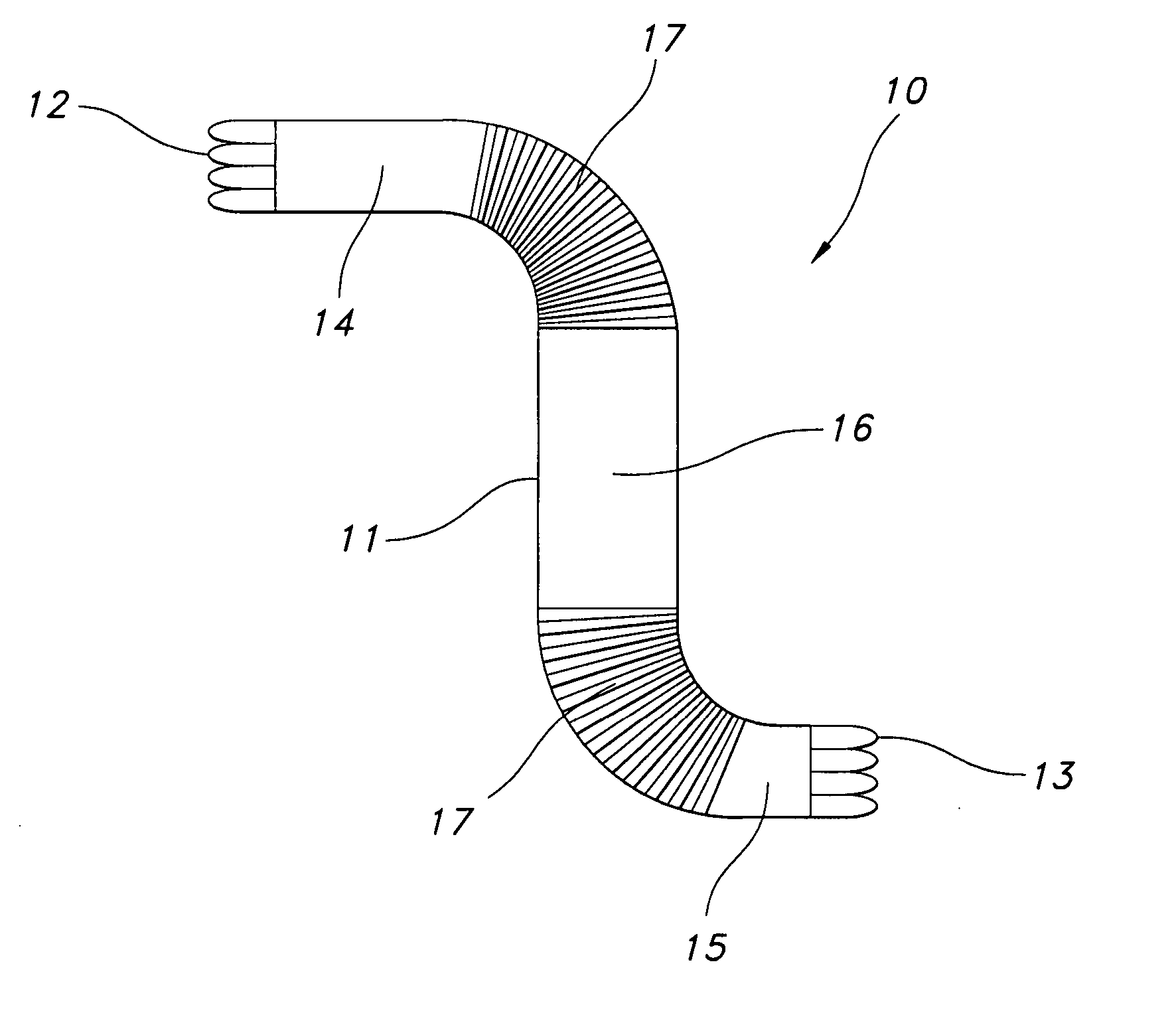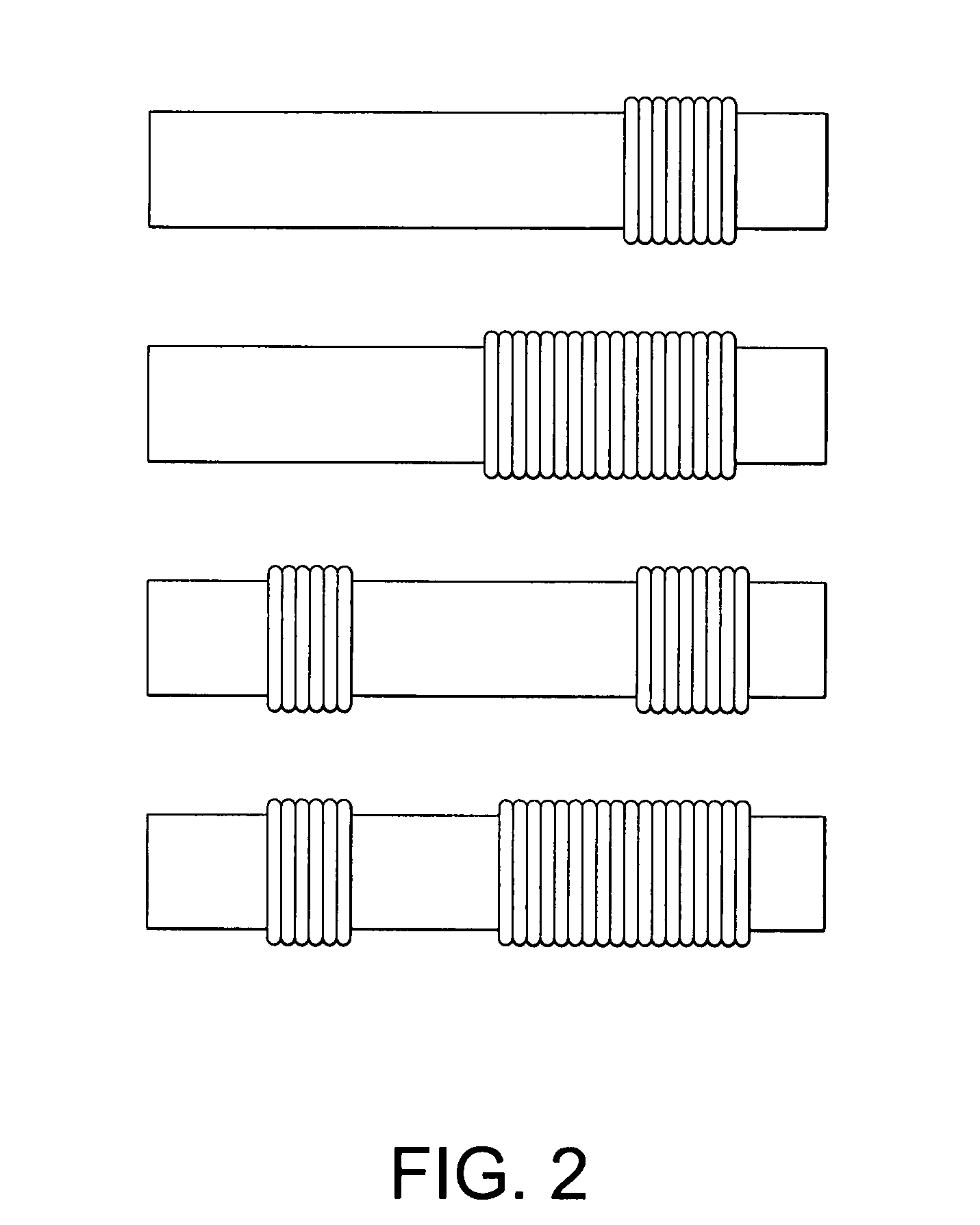Sectional crimped graft
a vascular graft and sectional crimping technology, applied in the field of vascular prosthesis, can solve the problems of insignificant longitudinal extension, disadvantageous to have excessive extension subsequent, and the graft not fully recovering to its original unloaded length, so as to limit the overall longitudinal extension, enhance the deployment of the stent-graft, and controllable flexibility and elongation. the effect of length
- Summary
- Abstract
- Description
- Claims
- Application Information
AI Technical Summary
Benefits of technology
Problems solved by technology
Method used
Image
Examples
Embodiment Construction
[0018] Referring now to FIG. 1, one aspect of the present invention is provided. Stent-graft 10 is an elongate generally tubular body, desirably a thin walled hollow cylinder 11 having opposed-stent ends, a first open-stent end 12 and a second open end 13. The graft is divided into end portions 14 and 15 adjacent open-stent ends 12 and 13, respectively. The graft 10 has central portion 16 extending longitudinally between the end portions 14 and 15.
[0019] Crimps 17 are incorporated in graft 10, extending from the first end portion 14 towards the central portion 16. Crimps 18 are incorporated on the other side of the graft extending from the second end portion 15 towards the central portion 16. Crimping in the manner shown in FIG. 1 is one example of crimping only on those areas of the graft where flexibility is required. In FIG. 1, the flexibility is needed on the portion that is to be bent or used at a particular angle or curvature. Since this type of flexibility is not required on...
PUM
 Login to View More
Login to View More Abstract
Description
Claims
Application Information
 Login to View More
Login to View More - R&D
- Intellectual Property
- Life Sciences
- Materials
- Tech Scout
- Unparalleled Data Quality
- Higher Quality Content
- 60% Fewer Hallucinations
Browse by: Latest US Patents, China's latest patents, Technical Efficacy Thesaurus, Application Domain, Technology Topic, Popular Technical Reports.
© 2025 PatSnap. All rights reserved.Legal|Privacy policy|Modern Slavery Act Transparency Statement|Sitemap|About US| Contact US: help@patsnap.com



